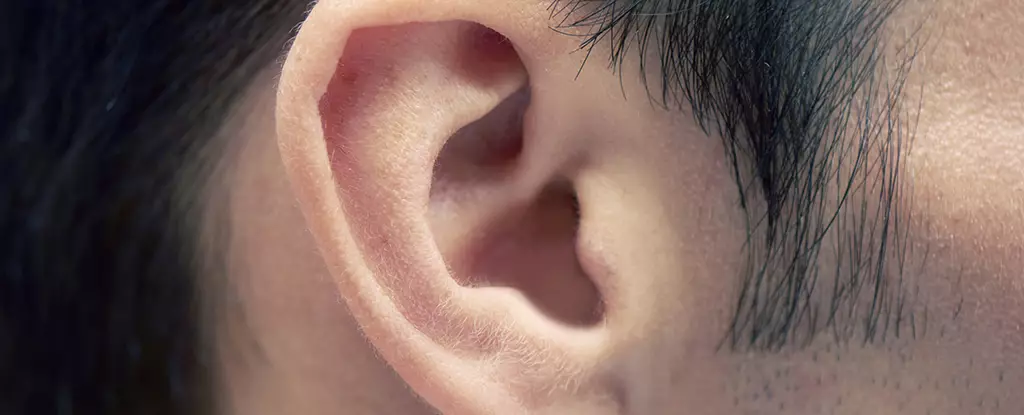Parkinson’s disease remains one of the most insidious neurodegenerative disorders, where early diagnosis is not merely beneficial but transformative for patient care and research. Traditionally, diagnosing Parkinson’s relies on clinical evaluation and neuroimaging, methods often expensive and sometimes inconclusive during the early stages. Recent scientific advances, however, have illuminated an unexpected source for potential diagnostic breakthroughs—a seemingly unremarkable substance: earwax. Far from being mere biological debris, earwax may harbor unique chemical signatures that reveal the onset of Parkinson’s, heralding a new era in non-invasive diagnostics.
From Sebum to Earwax: Choosing a More Stable Biomarker Medium
The quest to detect Parkinson’s early started with investigating changes in body odor linked to sebum, the oily secretion on skin responsible for natural moisture regulation. Sebum’s molecular alterations, prompted by Parkinson’s, hinted at volatile organic compounds (VOCs) as diagnostic markers. However, the dynamic environmental exposure of skin sebum presents significant variability, undermining test reliability. In contrast, earwax offers a protected environment less affected by external factors, making it a far more stable substrate to detect subtle chemical shifts associated with neurodegeneration.
Decoding Chemical Clues: The Role of VOCs in Earwax
Researchers from Zhejiang University and collaborators pioneered the analysis of VOCs extracted from earwax, hypothesizing these compounds might reflect underlying neurobiological changes. The study examined 209 participants, almost evenly split between Parkinson’s patients and healthy controls, to pinpoint distinguishing chemical compounds. Four specific VOCs—ethylbenzene, 4-ethyltoluene, pentanal, and 2-pentadecyl-1,3-dioxolane—emerged as promising candidates linked to Parkinson’s presence. This discovery suggests these compounds function as chemical fingerprints, subtly altered due to pathology-induced inflammation, cell stress, and neurodegenerative processes in the brain.
Artificial Intelligence Meets Biomarker Science
Harnessing the power of artificial intelligence, the research team developed an artificial intelligence olfactory system (AIO) trained on VOC data to differentiate Parkinson’s patients from healthy individuals. The AI model demonstrated an impressive accuracy rate of 94.4%, a compelling indicator that algorithm-driven interpretation of chemical data could revolutionize diagnostic efficacy. Although the sample size was modest and confined to initial studies, the results underscore AI’s critical role in synthesizing complex VOC profiles into actionable diagnostic tools, potentially enabling rapid chairside testing.
Implications for Clinical Practice and Research
The conventional Parkinson’s diagnostic arsenal—centered on neurological examinations and imaging—though indispensable, often falls short of providing accessible, rapid, and early detection. The prospect of a simple ear swab test capable of delivering insight into disease presence is undeniably a game-changer. Not only could this reduce reliance on costly brain scans, but it may also dramatically expedite intervention timelines, improving patient outcomes.
On a broader scale, these findings could deepen our comprehension of Parkinson’s disease mechanics. Identifying VOC alterations in earwax may illuminate biochemical pathways involved in disease onset, progression, or even potential triggers. Understanding these could pivot future research toward targeted preventive therapies or novel treatment strategies striding beyond symptom management.
Caveats and the Road Ahead
Despite enthusiasm surrounding these discoveries, it’s vital to remain cautious. The current evidence stems from relatively small cohorts, underscoring the necessity of larger, ethnically diverse, and longitudinal studies to validate predictive power across Parkinson’s stages. Only through rigorous multicenter trials can the clinical applicability of earwax VOC analysis be firmly established and standardized.
Furthermore, the heterogeneity of Parkinson’s itself—manifesting distinct symptom profiles and progression rates—poses inherent challenges. Whether the VOC markers identified are universally applicable or represent subtypes of the disease remains an open question. Addressing these complexities is imperative to avoid overgeneralization and ensure diagnostic precision.
Reimagining Diagnostic Innovation
Ultimately, utilizing earwax to detect Parkinson’s exemplifies innovative thinking by embracing the body’s overlooked reservoirs of information. The fusion of biochemical analysis with cutting-edge AI offers a blueprint for future diagnostics, emphasizing non-invasiveness, accuracy, and accessibility. While hurdles remain, these pioneering efforts solidify a pathway toward transforming how neurodegenerative diseases are identified—potentially changing countless lives by catching Parkinson’s far earlier than ever before.

